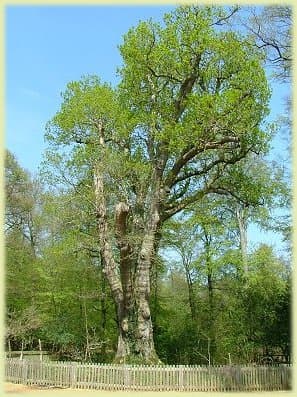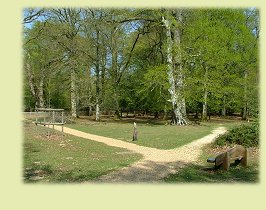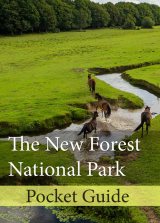The Knightwood Oak
New Forest
The Knightwood Oak
The huge Knightwood Oak is unquestionably the New Forest’s most famous tree and is thought to be one of the oldest, with age estimates ranging from 450 to 600 years old. The girth of the trunk close to ground level is just over seven metres, indeed a size only achieved after several centuries of growth!
What also makes the Knightwood Oak different to most other oaks in the New Forest is that it is a pollarded oak.
Pollarding, a method of tree management, was used throughout the New Forest in ancient times. A pollarded tree has been cut a couple of meters above ground level, promoting outward growth of fresh branches rather than the single main trunk continuing upwards. This forced growth of numerous new branches greatly increases the yield of timber from the tree.
The pollarding of oak trees in the New Forest was stopped when the Royal Navy started using the oak timber for shipbuilding at Bucklers Hard; pollarding prohibited the growth of tall, solid trunks ideal for cutting into long planks that were required for the ships of Nelson’s fleet.
Today, the Knightwood Oak is a very pleasant spot to go and relax with a picnic, while soaking up some of the unique New Forest atmosphere.
There are a couple of short walks from the Knightwood Oak car park, and the Bolderwood Deer Sanctuary isn’t too far away.
Where to find the Knightwood Oak
The giant tree is located at the southern end of Bolderwood Arboretum Ornamental Drive, very close to the A35 road approximately 2 miles west of Lyndhurst. The car park is on the opposite side of the Drive to the tree, the oak is only a couple of minutes walk away.
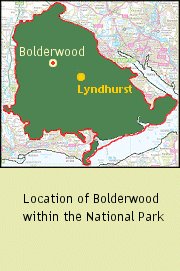
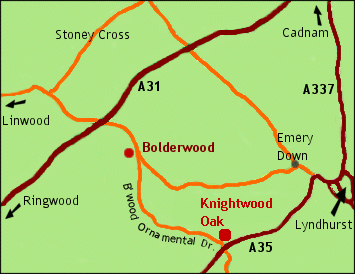
Related pages & resources
Important update: Regrettably the OS map excerpt previously shown for this walk can no longer be used on this website. The walk is doable without it, by following the directions and photos outlined below, but please take extra care. If you don’t feel confident about trying the walk without the map excerpt, please don’t!
You can buy our offline map by clicking here or the Pocket Guide Image.
I put together a handy downloadable pocket guide ebook containing all of the walks from this website plus many pages of fascinating facts, essential local tips and useful information regarding the New Forest. All of which is available for download in a completely ad free, mobile friendly format. Suitable for use in all smartphones, tablets and kindles etc. Save some ink and the hassle of printing by downloading the New Forest National Park Pocket Guide right here, the only one of it’s kind and found no where else!

Why Time in Nature Complements Daily Astrological Guidance
Many of us start the morning with a quick look at our horoscope. A few lines can help name our mood, highlight a tension, or point out an opening in the day. What often gets
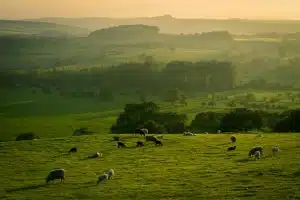
UK’s best natural spots
Wilderness escapes are not for everyone, that’s for sure. Some people simply prefer holidays where they can lounge all day and take it easy instead of being active, going hiking, swimming, or cycling. But there
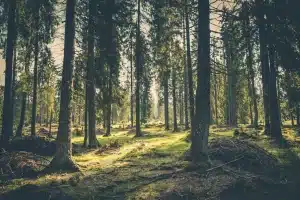
Tech Hacks for Exploring the New Forest National Park
The New Forest National Park in the UK is one of Britain’s most enchanting natural destinations. Covering ancient woodlands, open heathlands, and winding walking trails, it offers visitors a chance to step back in time
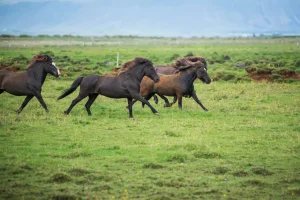
The Benefits of Outdoor Life for Horses
Life outdoors shapes stronger, healthier horses. Sunlight fuels the body with vitamin D, which helps bones grow dense and resilient. Space allows movement that stables cannot match. A horse stretching into stride, breathing clean air,

New Forest Getaway
The New Forest in southern England is unlike anywhere else, one moment you’re on a country lane, the next you’re face to face with a pony blocking traffic. Villages with thatched roofs appear out of

How Satellite Imagery is Transforming Wildlife Conservation
Today, a myriad of species and their habitats are struggling to survive and are on the verge of extinction due to permanent pressure on deforestation, climate change, and unlawful activities like illegal mining and logging.

